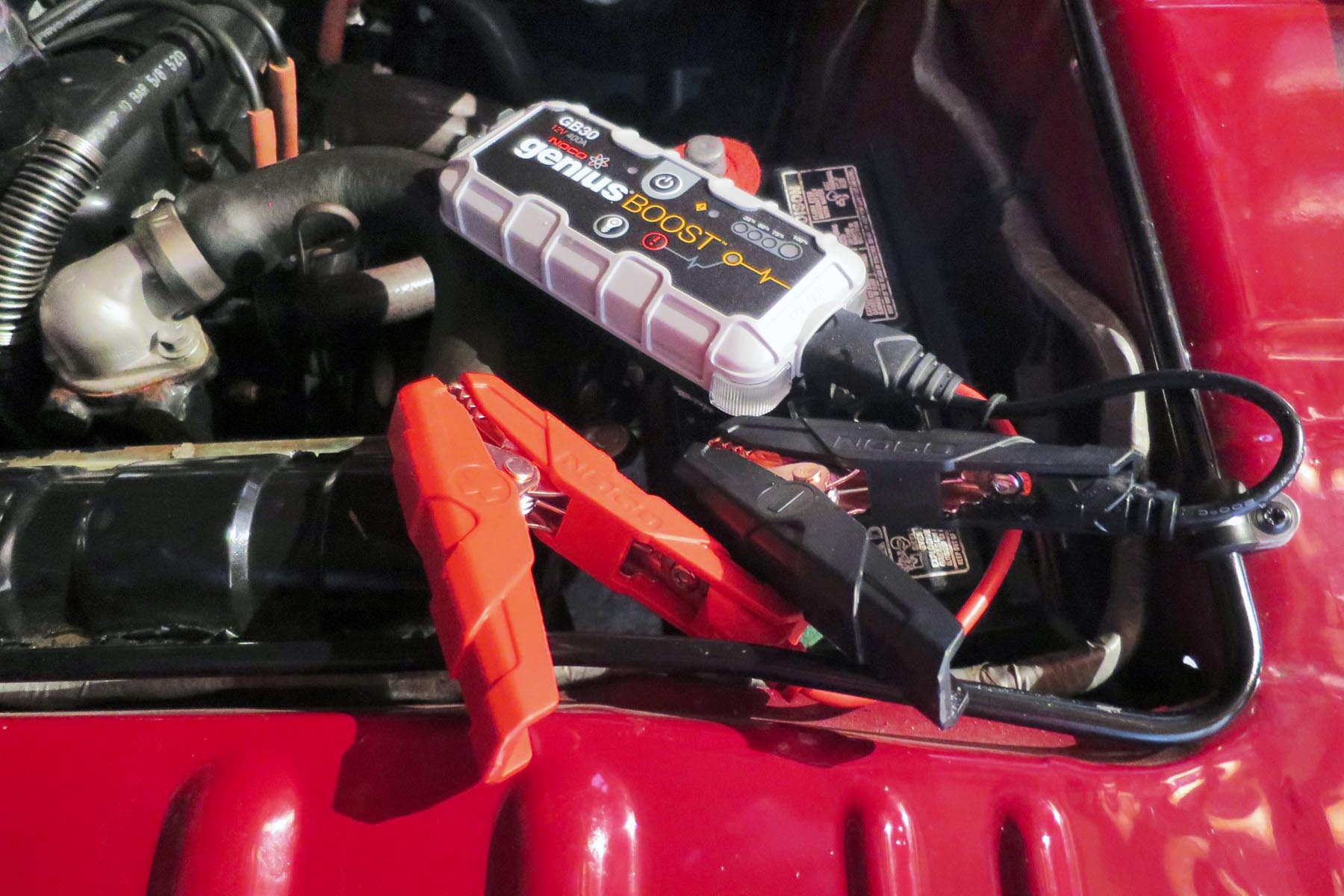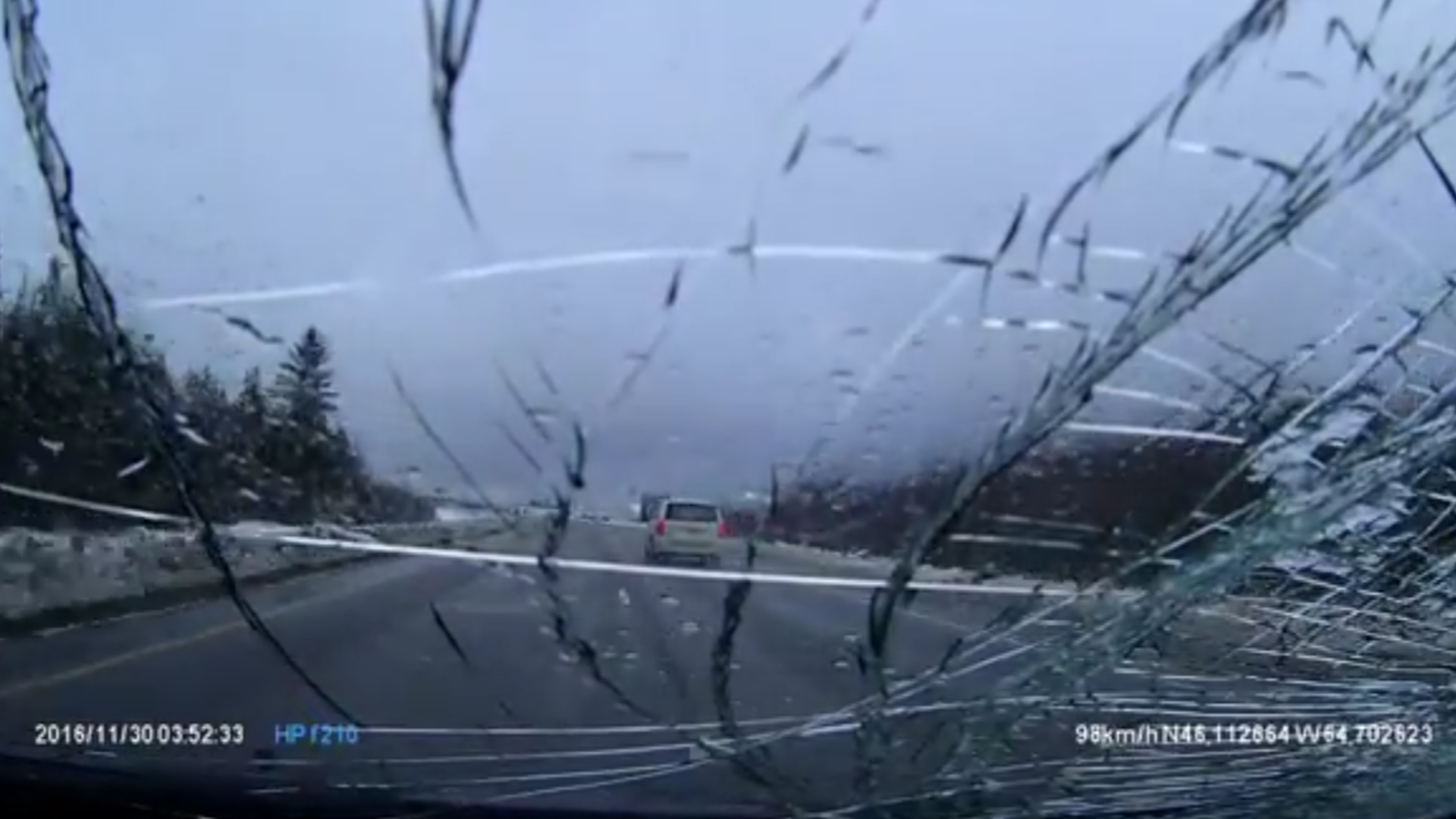Very unfortunately, I had a collision with some wildlife a few years back. It was February. It was 1 am. It was 26 degrees below. I became stranded for a time, in the middle of the night, in the middle of the winter, in the middle of nowhere.
After the impact, the creature in question was killed instantly, and the vehicle I was driving suffered moderate damage, leaving your writer on the roadside with a vehicle that was still running, but which would remain undriveable until I made some modifications to the front bumper under-tray (basically, a sheet of formed plastic), which was now shattered and twisted and mangled into the front suspension.
I was also stuck, having swerved off of the road and into a deeper-than-it-looked snowbank.
Worst part? I’d left in a rush earlier that evening, and failed to prepare myself for a four-hour drive in the middle of winter, in the middle of the night. I had my wallet, cell phone, a pair of sneakers on my feet, and a thin leather jacket on my back. Literally, nothing else was on board with me. I didn’t even have any gloves. Absolutely stupid, to be sure.
I braved the cold, ripped off the mangled undertray, eventually got the vehicle unstuck, and had only some severe cold-related discomfort to show for it. This situation could have been much worse.
An occurrence that leaves you stranded, stuck or helpless is easily within the realm of possibility for many readers, so consider this list of five things you’ll want if you suffer a cold-weather setback on the move, and a few products and items to help with each.
Traction

Give yourself a grip. A set of Trac-Grabber traction aid straps can work wonders, even if you’ve really mucked things up and become horribly stuck. A bag of sand, salt, or even kitty litter can make all the difference when you just need a little more grip under the drive wheels to get moving again. You’ll want a shovel too, perhaps a collapsible one, to help spread traction-enhancing material beneath the wheels, or to dig out a stuck vehicle, as necessary.
Pro Tip
When trying to free a stuck vehicle, remember to keep the wheels pointed straight ahead wherever possible, and to limit wheelspin, which tends to dig the vehicle in deeper. Further, have a look beneath the vehicle, digging out any snow if the vehicle is resting on top of it.
Power

Keep a charged jumper pack in your ride at all times, and opt for a model that can be recharged via plugging into the 12 volt outlet in your ride. Plug it in, keep it out of sight, and use it as needed to recharge a dead cellular phone, boost a dead battery, or to take advantage of the flashlight or SOS-strobe function built into many such units, if equipped (and highly recommended).
Pro Tip
If you restart a vehicle with a dead battery by boosting it, be sure to let the engine run for a good long while to recharge the battery – and don’t turn the engine off again until you’re in a safe location, in case it doesn’t restart.
Food/Water

Snack bars, bottled water and some beef jerky are great to keep on board as a bare minimum, in case you’ll be waiting a good long while for help to arrive. Fend off hunger and keep nourished while you wait for a tow. It nearly goes without saying, but don’t leave canned soft drinks in your ride when they could freeze: if they do, they’ll explode and make a total mess. When deciding on emergency food supplies to keep in your ride, be sure to choose foods that are calorie-dense, and not damaged by freezing.
Pro Tip
When heading out on a long trip, remember that heavy, fatty foods, excessively sugary foods, and excessive sodium and caffeine can contribute to dehydration, drowsiness, and reduced alertness and energy levels. Avoid foods like these, choosing protein-rich foods with complex carbs where possible, for maximum alertness and safety.
Visibility

As a driver, seeing and being seen are key in winter driving safety – and that logic extends to situations where you’re no longer mobile because of an accident or setback. If you’re stranded or immobile, make your surroundings safer for you, and your fellow motorists, by keeping a flashlight, road flares, battery-powered SOS light, and a reflective vest in your ride, at all times, as a bare minimum. You want the area around your disabled ride to be as visible as possible for your safety, and the safety of those nearby.
Pro Tip
Remember to engage your hazard lights after a collision or accident, even if you’re off the road. Further, remember that, after a collision, if you can’t safely get off of the road, come to stop where you are, and engage all vehicle lighting, including the hazard lighting. Never re-enter the roadway or try to push a disabled vehicle from the road.
Warmth

Hot packs, a parka, candles, heavy gloves and a set of heavy boots, as well as a thin foil thermal blanket can all make a big difference when it comes to keeping stranded drivers warm. Especially in extreme cold within a car that’s not running, your body will lose heat, fast. When stocking your ride with items for emergency warmth, think of keeping yourself warm and protected while you’re sitting and waiting for assistance, as well as keeping yourself warm and protected if you need to be outside of the vehicle for any length of time.
Pro Tip
If you’re stranded inside of the vehicle, and the engine is still able to run, remember to only run it a few minutes every hour, and to keep the exhaust pipe(s) clear of snow and ice, to prevent the buildup of dangerous gasses inside the vehicle.

